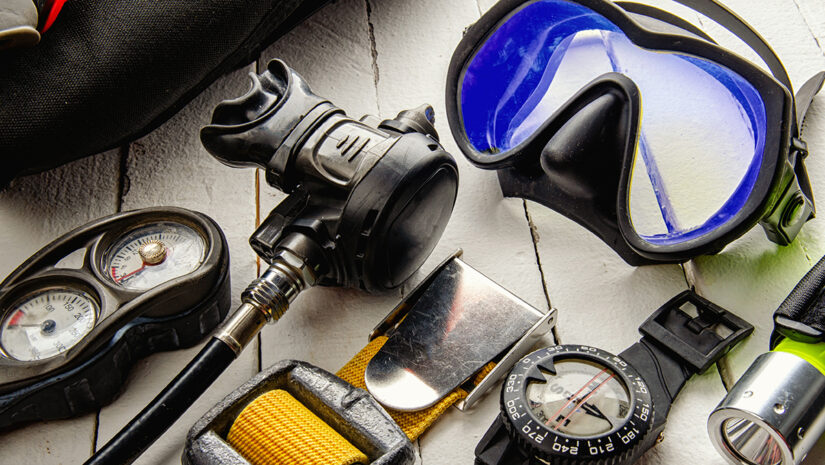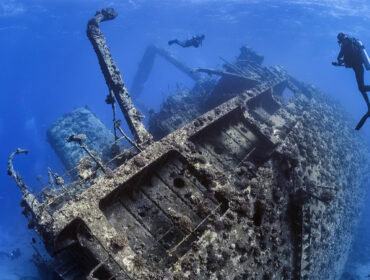A scuba regulator is a diver’s lifeline underwater, ensuring a steady supply of air. Scuba Regular maintenance is crucial to prevent failures that could lead to dangerous situations. When neglected, regulators can develop leaks, corrosion, or poor airflow, all of which compromise your safety.
In this guide, we’ll cover everything you need to know about maintaining your scuba regulator, including cleaning procedures, professional servicing, and best practices for storage. By following these steps, you can ensure your regulator stays in top condition for years to come.
Importance of Scuba Regular Maintenance
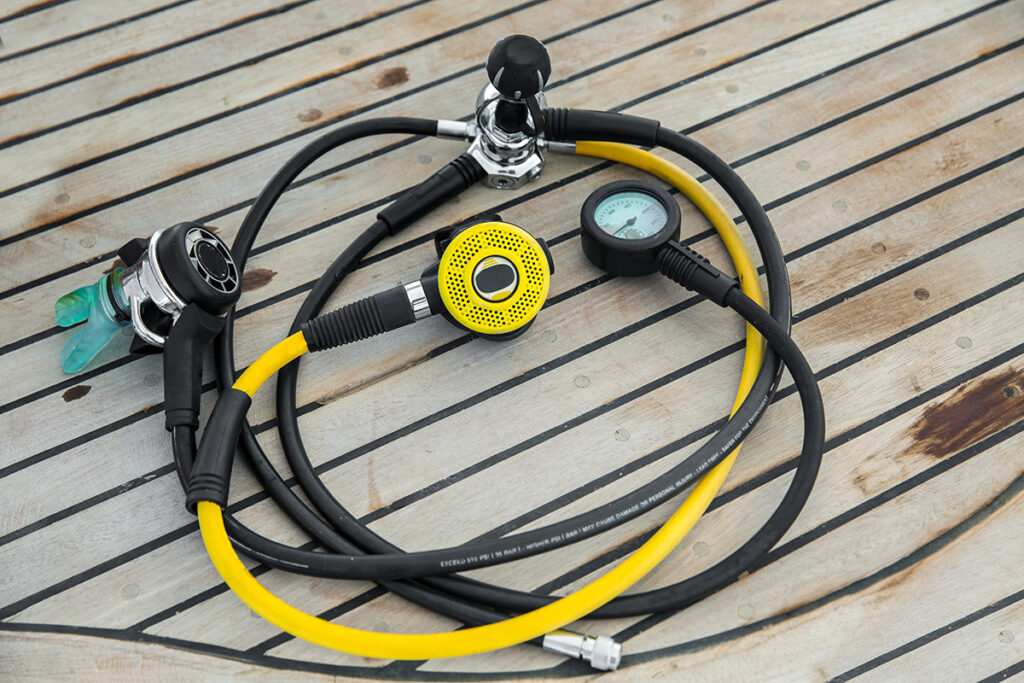
Salt and debris can accumulate over time, leading to internal damage in delicate moving parts. Without routine inspections, wear and tear may go unnoticed until a malfunction occurs, potentially putting you in an emergency situation.
A study analyzing recreational diving deaths between 2006 and 2015 found that 14% of these fatalities involved a reported regulator fault. Subsequent testing revealed that most issues were due to leaks leading to saltwater inhalation, excessive breathing resistance from mechanical dysfunctions, or, in rare cases, catastrophic failures like hose bursts.
By being proactive, and taking only a few minutes of your time, divers can extend the life of their regulator, ensuring every dive is both safe and enjoyable. A well-maintained regulator not only improves its reliability but also enhances breathing performance, making for a more comfortable experience underwater.
Sticking to a maintenance routine minimizes unexpected issues by allowing you to identify wear and tear before, reducing the risk of equipment failure mid-dive. Whether it’s a post-dive rinse, professional servicing, or proper storage, caring for your regulator is an essential part of being a responsible diver.
Step-by-Step Cleaning Guide
After every dive, as with any of your scuba gear, cleaning your regulator is essential to remove salt, sand, and contaminants that can degrade its performance over time. Follow these steps to keep your regulator in top condition.
1. Post-Dive Rinse
Immediately after surfacing, rinse your regulator with fresh water. This helps prevent salt and debris from settling into the internal components. Ensure that the dust cap is securely in place before rinsing to keep water from entering the first stage. Using a gentle flow of water, flush the second stage and hose connections, avoiding direct high-pressure streams that could force water into sensitive areas.
It may be sensible to sanitize the mouthpiece of your regulator, especially if you are using rented or shared gear. Using a diluted solution of hydrogen peroxide, you can clean the mouthpiece without leaving any nasty taste. Believe it or not, your standard mouthwash works well for this too.
2. Soaking
Soaking your regulator in warm, fresh water helps dissolve stubborn salt deposits. Let it sit for about 10–15 minutes, occasionally moving the purge button and adjustment knobs to ensure proper flushing of internal components. Avoid prolonged exposure to hot water or chlorine, as this can weaken O-rings and seals over time.
If you frequently use your regulator in a swimming pool, soaking it in fresh water is particularly beneficial. This step helps remove chlorine residue that could degrade internal components before allowing the regulator to dry completely.
3. Drying and Storage
After rinsing and soaking, allow the regulator to air dry in a cool, shaded area which prevents any moisture build up and mold growth. Avoid placing it in direct sunlight, as UV rays can degrade plastic and rubber components. Ensure that the dust cap is in place to keep any contaminants out and when storing, loosely coil the hoses to prevent kinks and stress points.
Once dry, many divers prefer to hang their regulators as opposed to storing them away inside a regulator bag. Constructing a storage rack from PVC pipes is an affordable and customizable option. PVC is durable, lightweight, and resistant to moisture, making it ideal for dive gear storage. You can design a rack to hang regulators, hoses, and other equipment, ensuring they remain organized and free from unnecessary stress.
If you have a bit more space to work with, transforming a closet or a section of your home into a dedicated scuba gear storage area is another great idea. Installing shelves, hooks, and rods allows for proper hanging and storage of regulators, wetsuits, and other gear. This approach ensures your equipment is stored in a controlled environment, away from potential hazards.
Professional Servicing
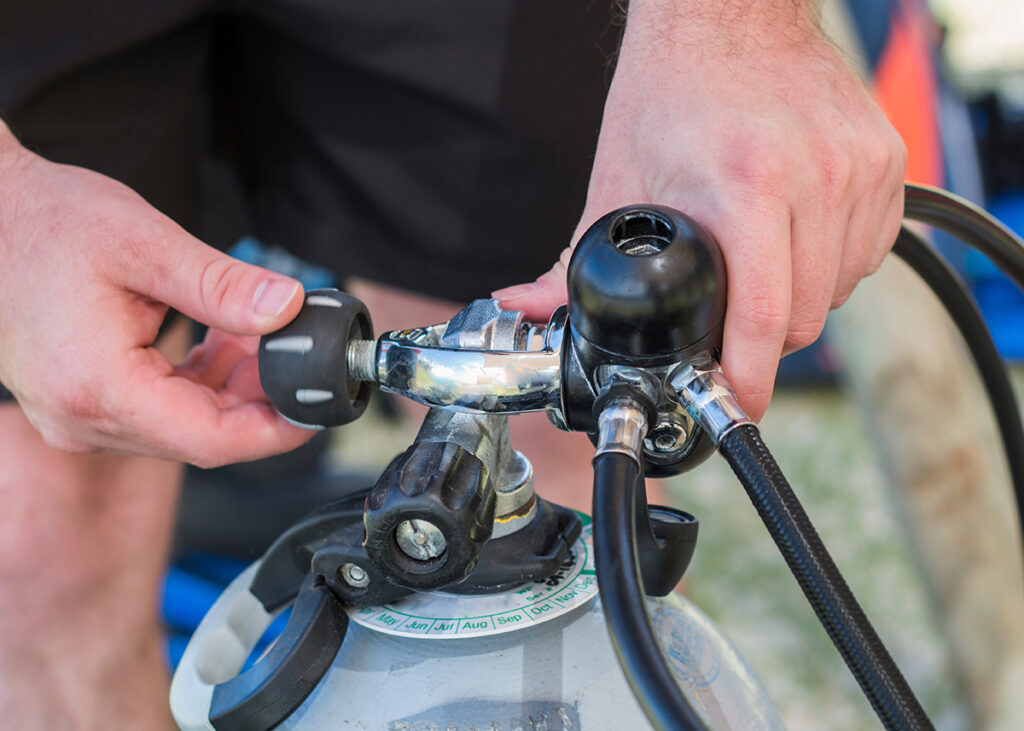
Even with regular at-home maintenance, scuba regulators require professional servicing to ensure they function safely and effectively.
When you take your regulator in for servicing, a certified technician will:
- Completely disassemble the first and second stages.
- Inspect and clean (often with an ultrasonic cleaner) all components for signs of corrosion or wear.
- Replace necessary parts such as O-rings, seats, and springs.
- Lubricate and reassemble the regulator according to manufacturer specifications.
- Conduct a pressure test to ensure optimal airflow and sealing.
Keep a detailed service log to track maintenance history, which is crucial for warranty validation and assessing equipment reliability and always ask your technician for documentation after servicing. Maintaining a log is also valuable if you ever decide to sell your regulator, as it provides buyers with a clear record of proper maintenance.
How often should I service my scuba regulator?
Manufacturers generally recommend servicing your regulator once a year or after a specific number of dives, typically around 100 dives. Sticking to this schedule helps prevent potential failures like the ones identified in the study of diver fatalities we looked at earlier.
When you purchase a new regulator, as with any new piece of dive gear, always read the manual before you dive with it. Manufacturers of scuba regulators will always specify the recommended service interval.
Signs my scuba regulator needs servicing
Recognizing early warning signs can prevent regulator malfunctions before they become dangerous. If you notice any of the following issues, it’s time to get your regulator serviced:
- Inconsistent airflow – If breathing feels restricted or uneven, the internal components may need adjustment or replacement.
- Hissing or bubbling sounds – Continuous bubbling when the regulator is not in use could indicate a worn-out O-ring or a small leak.
- Free-flowing second stage – If the regulator continues to release air uncontrollably, it might need servicing to recalibrate its pressure settings.
- Difficulty pressing the purge button – If the purge button is hard to push or sticks, salt buildup or internal damage could be the cause.
- Unusual taste or odor – A strange taste or smell from your regulator may signal contamination or bacterial growth inside the hoses or mouthpiece.
- Last service was over a year ago – Even if there are no noticeable issues, regular servicing is required to maintain peak performance and prevent future problems.
Best practices for storing scuba regulators
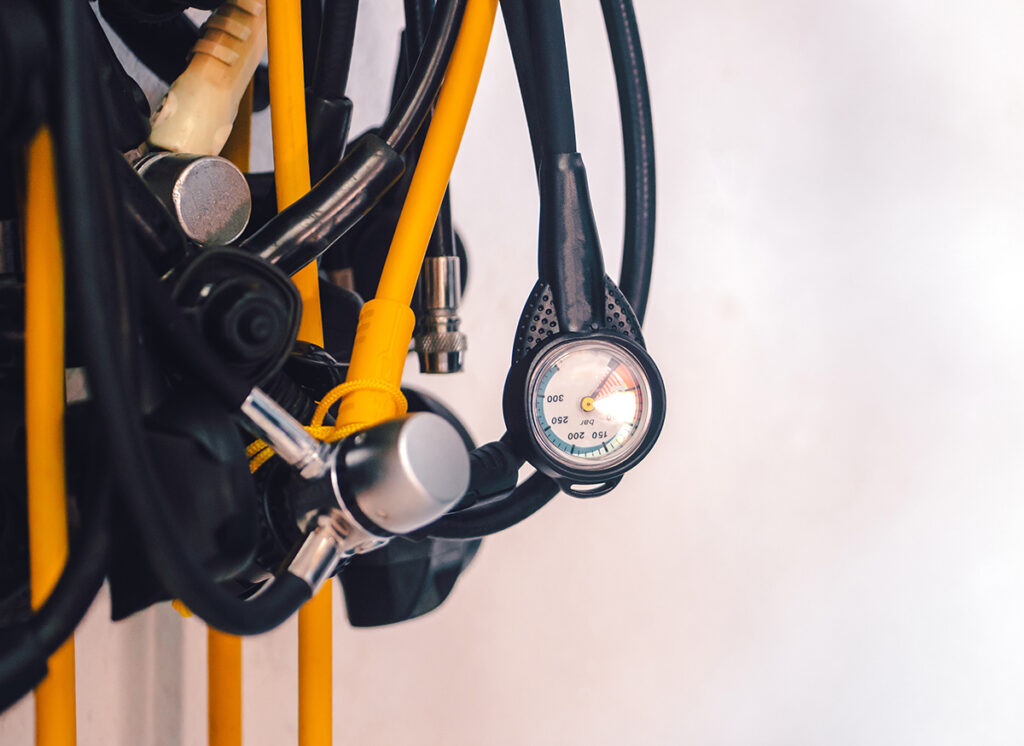
Proper storage of your scuba regulator is just as important as regular cleaning and servicing. When stored incorrectly, regulators can suffer from unnecessary wear, leading to damage, leaks, and degraded performance. Follow these tips to ensure your regulator remains in top condition between dives.
Keep It Dry
Moisture is the enemy of scuba regulators. After cleaning, always allow your regulator to air dry completely before storing it. Storing a damp regulator can lead to mold, mildew, and internal corrosion. Ensure that the dust cap is securely in place on the first stage to prevent water from entering sensitive components.
Avoid Extreme Temperatures
Heat and cold can negatively impact the materials of your regulator. Excessive heat can degrade rubber O-rings, while extreme cold can cause stiffness or cracking. Store your regulator in a cool, dry place away from direct sunlight, heaters, or freezing conditions.
Prevent Hose Stress
Regulator hoses should be loosely coiled and stored without kinks or tight bends. Kinks and sharp bends can weaken the hose over time, increasing the risk of leaks or failures. If possible, use a hanger designed for regulators to maintain a natural shape.
Use a Protective Case
A padded regulator bag helps protect your gear from dust, impacts, and environmental damage. This is especially useful for travel, preventing accidental bumps and knocks that could damage internal components.
Store in a Ventilated Area
Avoid storing your regulator in a sealed container or damp environment, such as a closed dive bag. Good airflow helps prevent trapped moisture from causing mold or corrosion. A breathable storage area, such as a gear shelf or an open dive bag, is ideal.
Regularly Check Your Regulator
Even while in storage, periodically inspect your regulator for any signs of hose deterioration, cracks, or stiffness. A quick visual check can help catch potential issues before your next dive.
What is the life expectancy of a scuba regulator?
The lifespan of a scuba regulator depends on several factors, including usage frequency, maintenance, and storage conditions. With proper care, a high-quality regulator can last 10 to 20 years or more. However, this requires the diver to follow best practices in cleaning and storing, regularly servicing, and ensuring parts are replaced as needed.

